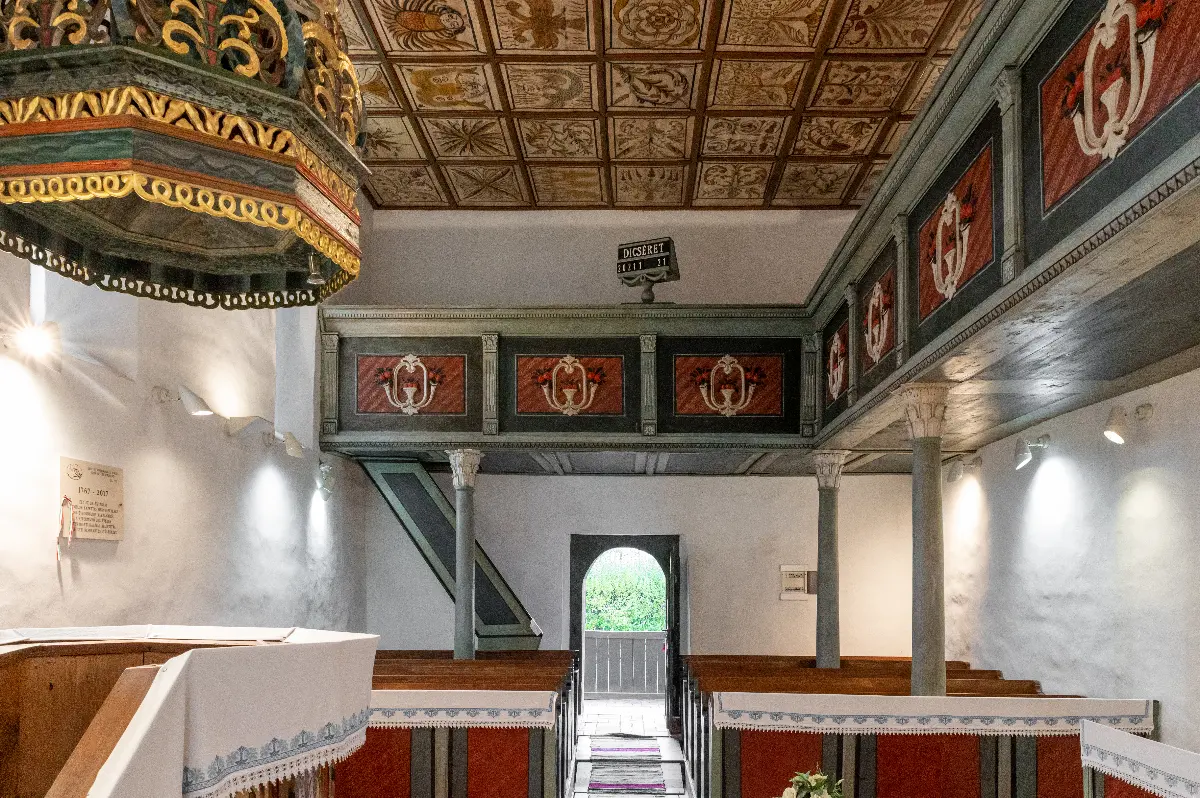The barefoot Notre Dame, Tákos
Walking in Tákos, you feel as if you have dropped in a Hungarian folk tale. The settlement of Bereg, with a couple of hundred inhabitants, its beautiful streets, still living folk traditions and the centuries old small wooden church, is one of the main destinations of rural tourism enthusiasts. The adornment of Tákos is the Reformed church built in 1766, which the people living here are rightly proud of. At that time the members of the local community created it with their own hands, from mud and twigs, since according to Maria Theresa’s provision, the followers of the Reformation could not use stones to build a church. A stunning sight welcomes the visitor entering the building, glancing at the beautiful wooden coffered ceiling and the flower-patterned pulpit takes your breath away. Another special feature of the building is the seats with different decoration in the front pews, which were made by local noble families for themselves. Although the church had been destroyed several times by floods, thanks to regular restorations, it has stood the test of time and still awaits its visitors in its full splendour.
Kaszonyi Hill and Mine Pit Lake, Barabás
Kaszonyi Hill in Barabás can be considered the part of the Inner Carpathian volcanic zone, it got its name from the Hungarian settlement of Mezőkaszony attached to Ukraine. With its more than 219 meters, it is the highest point of the Great Hungarian Plain, from where we can even see the castle of Munkács in nice weather. At its feet there is an azure mine pit lake with crystal clear water. The nature conservation area has rich biodiversity, provides home to about 70 species of birds - the dunnock, the black stork, the Eurasian blackcap, the Eurasian eagle-owl, and the common chiffchaff can be found among them. The hill is also famous for its highly protected rare insect species, in Hungary, for example, the Transylvanian futrinka (Carabus Hampei) and the flat blue futrinka (Carabus violaceus) occur only on the Szatmár-Bereg Plain. For those who love hiking and nature, Kaszonyi Hill and its surroundings can be an excellent destination, it is definitely worth a visit here.
Dry Mill, Tarpa
A dry mill used to be built in almost every village in the Upper Tisza region, even if there was a watermill or a windmill nearby. But the mill of Tarpa is the only one that has gone down to posterity. The dry mill was built by the Hegyi family at the beginning of the 19th century. The huge wheel of the mill was driven by horses tied to the shafts going round and round in the so-called bell tower. The building made of oak and covered by roof shingle was a common meeting place for the villagers, where the farmers waiting for their turn lived a vibrant social life. With the gain ground of steam mills, the use of dry mills completely fell into the background, the mill of Tarpa last ground in 1929. The building, which is in impeccable condition, can still be visited today, and next to the entrance to the mill house, a small wooden bench serves as a resting place for tired hikers.
Castle Tomcsányi, Vásárosnamény
The castle was built by the Lónyay family in 1728, and in the last third of the 18th century it gained its current Baroque form when it was enlarged. The building then passed down from heir to heir over time, and from the beginning of the 20th century until its nationalization it gave home for the Tomcsányi family, whose name is still used by the castle. After nationalization, soldiers dwelled in it for a while, then from 1954 to 1986 it functioned as a dormitory of a grammar school. The castle stood empty until 2005, and its condition greatly deteriorated over the almost two decades. The exceptional architectural heritage was then completely renovated by 2007, and since then it has been the site of the Bereg Museum's permanent and temporary exhibitions and programs. The museum possesses an extremely rich ethnographic collection, where visiting you can learn about the features of the area - including the famous Bereg cross-stitch embroidery, the motifs of which developed from a mixture of flowers and geometric shapes and are made in red, blue and black colour scheme. The park surrounding the castle — which is the venue of many museum events — is the habitat of such natural rarities as the 300-year-old Japanese pagoda tree and the tulip tree.










